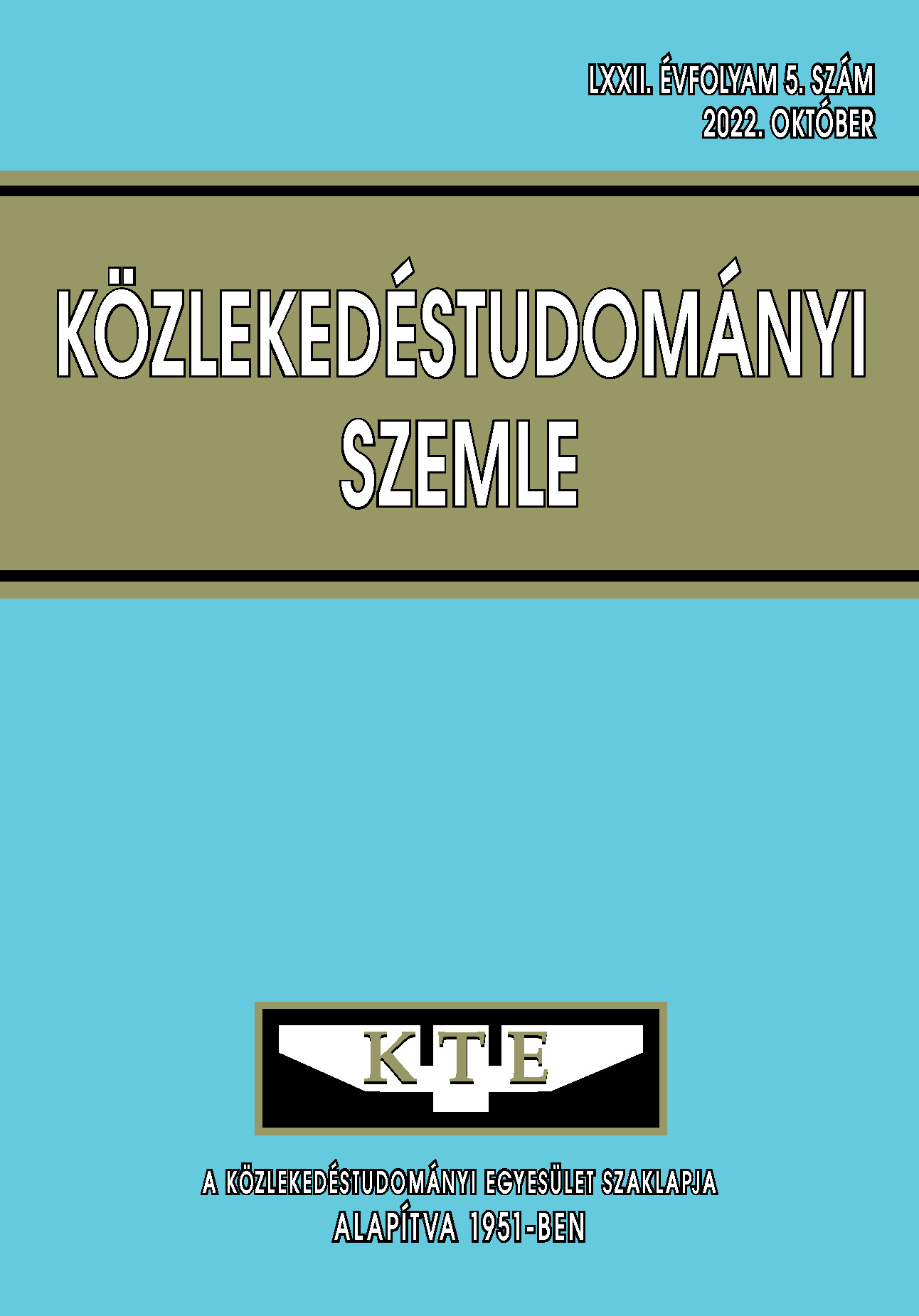Kamera-LiDAR rendszer automatizált kalibrációja speciális objektum segítségével
Absztrakt
Egy részben automatizált kamera-LiDAR kalibrációs módszer bemutatása alkalmas arra, hogy betekintést kapjunk egy olyan rendszerbe, amely egyaránt képes online és offline kalibráció elvégzésére, egy kalibrációs objektum segítségével. Nyomon követhető egy lehetséges megoldás az objektum pontfelhőben történő beavatkozás nélküli detektálására is.
Hivatkozások
P. An et al., “Geometric calibration for LiDAR-camera system fusing 3D-2D and 3D-3D point correspondences,” Opt. Express, vol. 28, no. 2, p. 2122, Jan. 2020, DOI: https://doi.org/h3cm
Z. Pusztai and L. Hajder, “Accurate Calibration of LiDAR-Camera Systems Using Ordinary Boxes,” in 2017 IEEE International Conference on Computer Vision Workshops (ICCVW), Oct. 2017, vol. 2018-Janua, pp. 394–402, DOI: https://doi.org/gg3qrw
Bradski G, “The OpenCV library,” Dr. Dobb’s J. Softw. Tools, vol. 25, no. 120, pp. 122–125, 2000.
Z. Zhang, “A flexible new technique for camera calibration,” IEEE Trans. Pattern Anal. Mach. Intell., vol. 22, no. 11, pp. 1330–1334, 2000, DOI: https://doi.org/cp3bd6
K. Lelowicz, “Camera model for lens with strong distortion in automotive application,” in 2019 24th International Conference on Methods and Models in Automation and Robotics, MMAR 2019, 2019, pp. 314–319, DOI: https://doi.org/h3cn
J. Kannala and S. S. Brandt, “A generic camera model and calibration method for conventional, wide-angle, and fish-eye lenses,” IEEE Trans. Pattern Anal. Mach. Intell., vol. 28, no. 8, pp. 1335–1340, 2006, DOI: https://doi.org/b6s2bb
A. Babinec, L. Jurišica, P. Hubinský, and F. Duchoň, “Visual Localization of Mobile Robot Using Artificial Markers,” Procedia Eng., vol. 96, pp. 1–9, 2014, DOI: https://doi.org/ghg8d2
R. B. Rusu and S. Cousins, “3D is here: Point Cloud Library (PCL),” 2011, DOI: https://doi.org/cd5qhk
R. C. B. M. A. Fischler, “Random Sample Consensus: A Paradigm for Model Fitting with Applications to Image Analysis and Automated Cartography,” Comm. ACM, vol. 24, pp. 381–395, 1981.
K. Levenberg, “A METHOD FOR THE SOLUTION OF CERTAIN NON-LINEAR PROBLEMS IN LEAST SQUARES,” Q. Appl. Math., vol. 2, pp. 164–168, 1944. [11] D. W. Marquardt, “An Algorithm for Least-Squares Estimation of Nonlinear Parameters,” J. Soc. Ind. Appl. Math., vol. 11, no. 2, pp. 431–441, Jun. 1963.
D. Kim and S. Kim, “Extrinsic parameter calibration of 2D radar-camera using point matching and generative optimization,” in International Conference on Control, Automation and Systems,
, vol. 2019-Octob, pp. 99–103, DOI: https://doi.org/h3mp
Az elektronikusan megjelenő cikkek nyílt hozzáféréssel rendelkeznek (OJS), online ingyenesen elérhetők és letölthetők. A cikkek szerzőit nem terheli megjelentetési vagy kiadási költség (APC). Felhasználóknak joguk van a cikkek olvasására, letöltésére, másolására, kinyomtatására, valamint azokban való keresésre, vagy a teljes szöveg linkkel történő megosztására.
A szerzőknek nyilatkozniuk kell arról, hogy beadványukat korábban nem tették közzé más folyóiratban, a pénzügyi támogatás feltüntetésre került és a hivatkozások listája teljes és pontos, beleértve az URL-ek és a DOI-k specifikációját is (ha rendelkezésre állnak). A cikktervezet beadásakor minden szerző jóváhagyja a benyújtott változatot. A szerzők garantálják, hogy a cikk az ő eredeti művük. A szerzők kötelesek részt venni a szakértői értékelés folyamatában, követni a bírálók tanácsait, betartani az előírt határidőket, és amennyiben előfordulnak, kötelesek visszavonni a benyújtást vagy kijavítani a hibákat.
Minden beadott cikket szakértői értékelés alá kerül, ahol a szerkesztők független értékelést kérnek legalább egy szakértőtől, ügyelve arra, hogy a bíráló(k)nak ne legyen összeférhetetlensége a szerzőkkel. A végső döntést a főszerkesztő hozza meg, aki figyelembe veszi az értékeléseket és a szerkesztők javaslatait. A szerkesztők és a lektorok bizalmasan kezelik a beadványt.
A kiadó és a szerkesztők elkötelezettek a magas etikai normák betartása mellett, és megakadályozzák azokat a publikációkat, amelyekben kutatási visszaélés történt. Az ilyen etikai kérdésekben a COPE irányelveit követik.
A szerzők fenntartják a szerzői jogokat, és megadják a folyóiratnak az első közzétételi jogot a Creative Commons Licenc alapján (https://creativecommons.org/licenses/by-nc-nd/4.0), amely lehetővé teszi mások számára, hogy megosszák a művet, elismerve a mű szerzőségét és a folyóiratban való első közzétételt.
A folyóirat archiválja az összes megjelent cikket, és a folyóirat tulajdonosa, a Közlekedéstudományi Egyesület továbbra is üzemelteti az adatbázist abban az esetben is, ha a folyóirat kiadása megszűnik.















